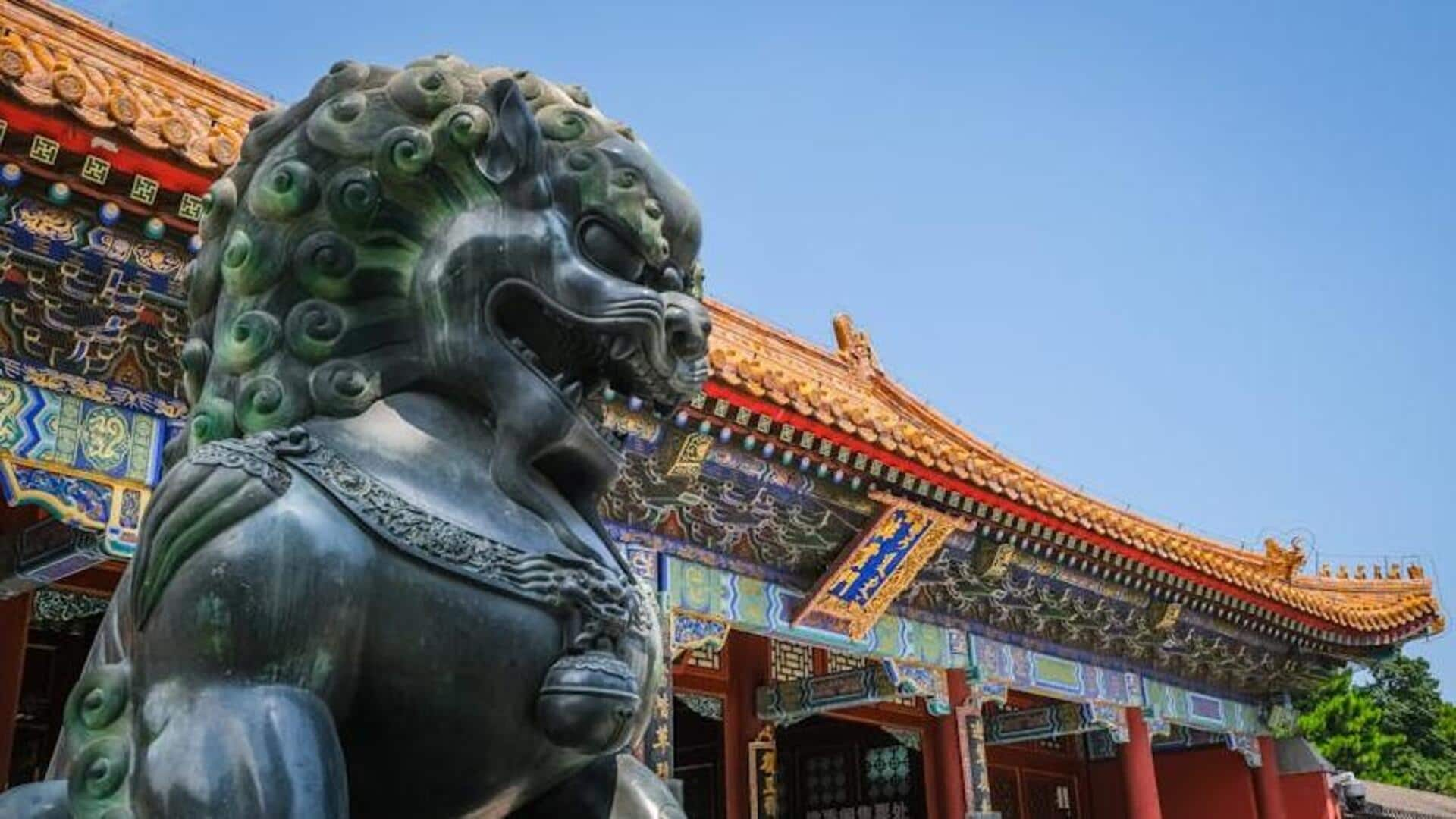
Wander the imperial palaces of Beijing
What's the story
Beijing, the heart of China, is a city where ancient history and modernity blend seamlessly. Among its most captivating attractions are the imperial palaces, grandiose structures that tell tales of dynasties long gone. These palaces are not just architectural marvels but also repositories of Chinese culture and history. They offer a glimpse into the lives of emperors who once ruled.
Recommendation 1
The Forbidden City: A majestic legacy
The Forbidden City, a monumental testament to Chinese architectural genius, covers more than 180 acres. It served as the home for 24 emperors across two dynasties. Adorned with 980 surviving buildings featuring yellow-glazed tiles that symbolize royalty, it provides an unparalleled journey through China's rich history. Visitors can spend hours exploring its vast courtyards, magnificent halls, and viewing intricate artifacts within the Palace Museum.
Recommendation 2
Summer Palace: An artistic retreat
The Summer Palace, larger than Vatican City by three times, served as a royal garden for Qing emperors. It blends natural landscapes with structures like the Long Corridor and Marble Boat, reflecting traditional Chinese garden design. This complex, featuring lakes, gardens, palaces, and temples, was built for solace from the Forbidden City's summer heat. It achieves aesthetic perfection through its harmonious design.
Recommendation 3
The Old Summer Palace: Echoes of elegance
Unlike its counterpart, the Old Summer Palace—also known as Yuanmingyuan—is a poignant reminder of past conflicts, having been destroyed during the Second Opium War. Today's visitors will find ruins amidst lush gardens that hint at its former glory. This site offers a more contemplative experience; it's a place to ponder on impermanence while admiring reconstructed pavilions and bridges that hint at what was lost.
Recommendation 4
Prince Gong's Mansion: A glimpse into aristocracy
Prince Gong's Mansion provides insight into the life of Qing Dynasty nobility outside the immediate imperial family. This well-preserved residence features intricately designed interiors and tranquil gardens with rockeries and ponds reflecting Taoist principles. It serves as an excellent example of traditional Chinese architecture and landscape design, offering a quieter alternative to Beijing's more crowded historical sites.
Recommendation 5
Jingshan Park: Panoramic views await
Originally part of the Imperial Garden, Jingshan Park is now a public space known for its panoramic views. Climbing up Jingshan Hill, visitors move north from the Forbidden City's main gate to an overlook. This vantage point offers breathtaking vistas over central Beijing, including spectacular views onto the Forbidden City itself. It's perfect for understanding its vast scale and appreciating the city's beauty.